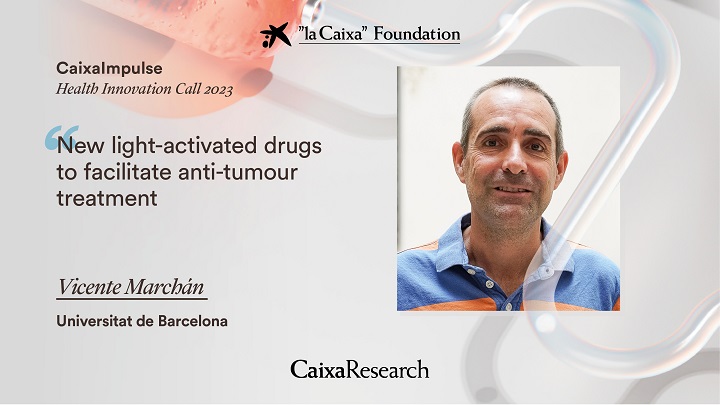New light-activatable drugs to facilitate anti-tumour treatment

A project to promote the application of new light-activated drugs to facilitate anti-tumour treatment in patients, led by Vicente Marchán, professor at the Faculty of Chemistry of the University of Barcelona, will receive support from the CaixaImpulse Innovation program from the La Caixa Foundation.

A project to promote the application of new light-activated drugs to facilitate anti-tumour treatment in patients, led by Vicente Marchán, professor at the Faculty of Chemistry of the University of Barcelona, will receive support from the CaixaImpulse Innovation program from the La Caixa Foundation.
The 2023 call of the CaixaImpulse Innovation program has awarded 3.3 million euros to 29 biomedical research projects, 15 of them from Catalan research canters. The aim is to contribute to transferring research results to society and the market, thus promoting the creation of new products, services and companies related to life sciences and health.
Light-activated drugs to fight diseases
Photodynamic therapy is a non-invasive technique currently used in the clinic to destroy tumours. It is based on the combination of three components: light, oxygen and a drug called photosensitizer. This technique is also used to treat some skin conditions, fungal and microbial infections, and age-related macular degeneration. However, the fact that most solid tumours have highly hypoxic (oxygen-deficient) regions limits the efficacy of photodynamic therapy since the activity of current photosensitizers is highly dependent on oxygen concentration. It is therefore necessary to develop new drugs to treat some of the hypoxic tumours with the worst prognosis, such as glioblastoma, colorectal cancer or pancreatic cancer, among others.
The project team, led by Professor Vicente Marchán of the UB's Department of Inorganic and Organic Chemistry, has recently patented a new family of photosensitizers. Apart from being non-toxic in the dark and able to be effectively activated by light irradiation, these compounds show excellent activity under conditions of low oxygen concentration, which opens the door to the treatment of deep and large hypoxic tumours by photodynamic therapy. The aim of the project is to facilitate the transfer of these new antitumor drugs so that they ultimately reach patients. Therefore, in this phase, safety and efficacy tests will be carried out in animal models.
